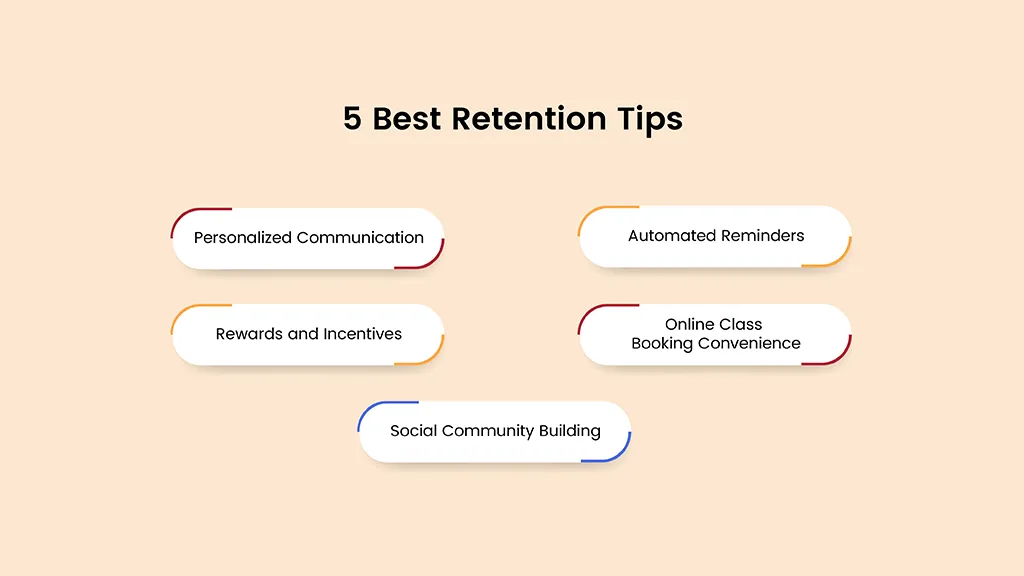The fitness industry has undergone a significant transformation in recent years, with a growing emphasis on providing a personalized and engaging member experience. Traditionally, the industry was dominated by large “big box” gym complexes that catered to a wide range of users. However, the market has seen a rise in the popularity of boutique fitness studios, which offer a more curated and close approach to exercise. According to gym statistics, the number of gym facilities in the United States of America is about 41,370.
These smaller, specialized studios often feature a limited range of equipment and a greater focus on group classes and personal training. By prioritizing the member’s needs and preferences, they have been able to foster a stronger sense of community and accountability. Moreover, the shift towards more flexible pricing models with less rigid contract structures has empowered members to take a more active role in their fitness journeys, reducing the reasons to cancel gym contracts or memberships.
The key trends driving this transformation include a growing emphasis on the overall member experience, the importance of personalized communication and goal-setting, and the integration of technology to streamline operations and enhance convenience. As the industry continues to evolve, fitness providers are increasingly recognizing the value of prioritizing member satisfaction and fostering long-term engagement to ensure the sustainability of their businesses.
9 Reasons to Cancel Gym Membership
| Problem | Effect | Solution |
| Members Not Achieving Their Fitness Goals | Low motivation, frustration, quitting | – Personalized goal setting with trainers. – Offering a variety of fitness classes for different goals and interests. – Implement progress-tracking tools and celebrate milestones. |
| Lack of Sense of Community | Feeling isolated, lack of support | – Organize social events and group fitness activities. – Create online communities for members to connect and motivate each other. – Encourage peer-to-peer encouragement programs. |
| A Lack of Diverse Workouts and New Experiences | Boredom, plateauing in fitness progress | – Regularly introduce new workout classes and equipment. – Partner with local fitness instructors for guest workshops. – Offer outdoor fitness activities and challenges. |
| Cleanliness | Unhygienic environment, potential health risks | – Increase cleaning frequency and staff. – Conduct regular hygiene inspections. – Encourage members to wipe down equipment after use. |
| Relocating and/or Location No Longer Suitable | Inconvenience, loss of membership | – Offer flexible membership options with freeze capabilities. – Partner with other gyms in different locations for member access. – Provide online workout options for continued fitness at home. |
| Budget Concerns | Difficulty affording membership fees | – Introduce tiered membership options with varying access levels. – Offer financial assistance programs or discounts. – Partner with health insurance companies to incentivize memberships. |
| Health Changes or Challenges | Inability to participate in certain activities | – Provide modified workout options and personal training for specific needs. – Partner with physical therapists to offer on-site consultations. – Promote a safe and inclusive environment for all fitness levels. |
| Family or Work Obligations | Lack of time for workouts | – Offer shorter, high-intensity workout options. – Provide childcare services within the gym facility. – Increase availability of early morning, late evening, and weekend classes. |
| No Gym Buddy or Accountability Partner | Lack of motivation for achieving fitness goals | – Facilitate group fitness classes for built-in accountability. – Implement a workout buddy program to connect members. – Offer mobile apps for workout tracking and progress sharing. |
Discover the Future of Gym Management.
Switch to our intuitive software for a more efficient and user-friendly experience.
- Maximize efficiency
- Automate tasks
- Customize member journeys

Key trends in the fitness industry
The market trends have been shifting tremendously to focused gym classes, particularly targeting members’ experiences. This change in the market directly refers to the boutique fitness style. The following are a few factors that help you understand why retention rate is so important:
Precise gym sizes
There was a time when whole gyms were preferred as the maximum fill, and good interactions were a motive. Well, not anymore; the smaller and more precise the gym is, the more preferable it is. Usually, nowadays, fitness boutiques consist of a single or two rooms. Unlike the big gym equipment, the boutiques have very few required equipment. Since the space is quite limited, the number of members is specific at a time, which not only helps to keep the trainers focused on them but also accommodates them pretty well. However, the impact of these fitness boutiques on overall business has not been good.
Modified pricing packages
You must agree with me that those lengthy, rigid contracts were nothing but cuffs in the hands. Multiple members find it very difficult to sign such contracts with the gyms even when they are willing to cancel the membership, so they are incapable. Such situations lead the clients to leave the gym once the contract is over. It simply doesn’t fit in the category of good retention strategies. Whereas, let’s talk about the current flexible monthly, bi-annual, or annual packages derived through pricing strategies. This ultimately gives freedom to members so that they feel in control. Moreover, it greatly impacts the gym or fitness center as they are usually focused on improving their strategies to retain their customers.
Focus on members’ experience
The primary influence that boutique fitness studios have had on the industry is their emphasis on prioritizing the member’s experience. While addressing the members’ needs should always be a fundamental priority, this has not consistently been the case in the past. However, these smaller studios have prioritized focusing on the member’s enjoyment, engagement, and satisfaction, marking a notable shift in the industry.
5 best retention tips

Here are five of the best retention tips you can use to keep your client rate growing and reduce the number of reasons to cancel a gym contract:
1. Personalized Communication
Understanding each member’s unique goals and preferences is crucial for providing tailored services. Personalized communication highly appeals to members and can significantly improve satisfaction and retention rates.
2. Automated Reminders
Implementing automated reminders can streamline the process of sending members class notifications and important updates. This feature eliminates the time-consuming task of manual management and ensures that personalized reminders are delivered based on individual memberships and packages.
3. Rewards and Incentives
Utilizing a software solution enables the implementation of loyalty programs and the offering of benefits and rewards to members. This approach effectively enhances member retention by introducing incentives for achieving goals, reaching milestones, and referring new members.
4. Online Class Booking Convenience
A comprehensive gym management system can alleviate staff workload and enhance member convenience by allowing them to book specific training sessions and appointments from anywhere. This streamlined process not only benefits members but also contributes to improved retention.
5. Social Community Building
Leveraging gym software to create a sense of community among members is a powerful strategy for boosting retention. Members can utilize the software to create profiles, participate in group challenges, view activity feeds, and connect with others for support and accountability.
Conclusion
The trends in the fitness industry have been shifting swiftly toward more prime experiences, as people didn’t have satisfactory experiences with big box gyms or health clubs. Since people’s awareness of fitness has been increasing, they are more likely to explore the variety of different options available in the market. This directly indicates that gym owners are required to focus on the members’ experience to ensure client retention and reduce the reasons for canceling gym contracts.
